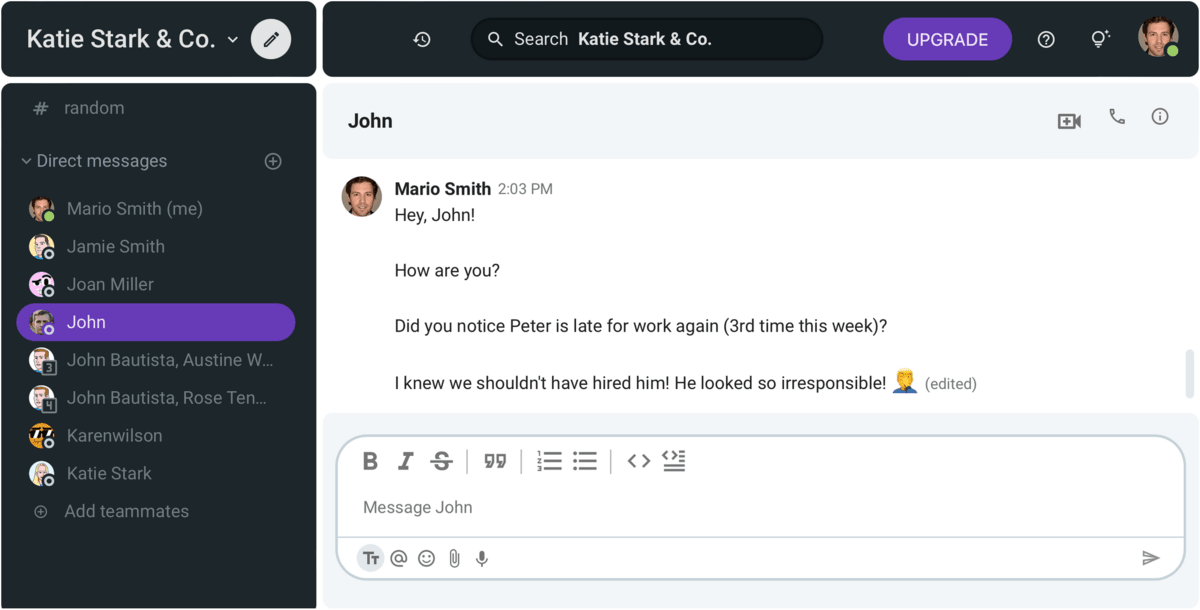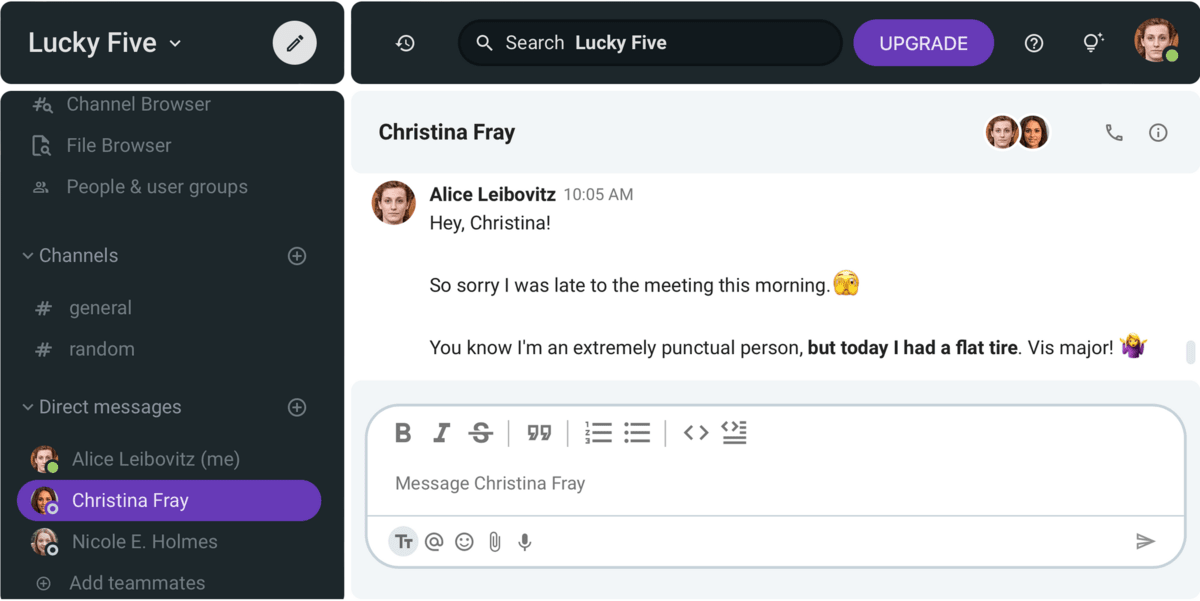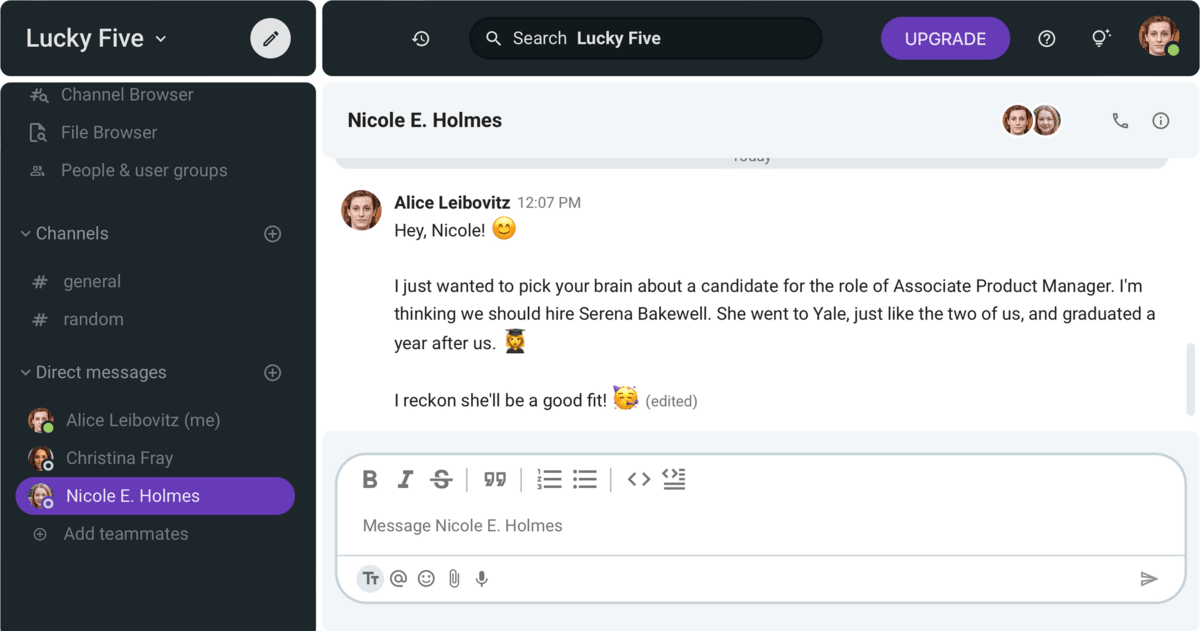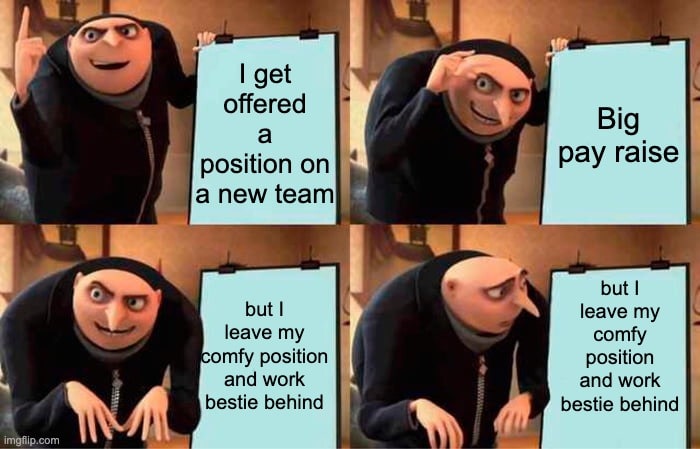You are not racist. You are not sexist. You are punctual.
I could make a dozen more statements like this that you would confidently agree with on the spot. And you would be correct!
Your unconscious mind, however, would not hold up under scrutiny regarding any of these statements.
That’s why it’s never your fault when you’re late or why you assumed the secretary answered when you called the CEO and heard a female voice.
These are all the consequences of your cognitive and unconscious biases. And they can have quite a negative effect in the workplace.
The good news is — you can overcome these biases.
In fact, the best tip for overcoming biases in the workplace is to be aware of them. But we’ll offer more concrete tips from seasoned experts to help you avoid workplace blunders.
KEY TAKEAWAYS
- Cognitive biases are systematic errors in reasoning that occur when we process information (such as thinking that a coin is more likely to land on tails than heads if it had previously landed on heads 5 times in a row).
- Unconscious biases are positive or negative associations we hold with specific groups without even being aware of them (such as the association that height equals leadership competency, for which there is no basis despite 58% of Fortune 500 CEOs being 6 feet or taller).
- At a company level, these biases negatively affect employee retention, employer branding, and engagement.
- The first step in overcoming workplace biases is awareness of them.
Cognitive biases in the workplace
Cognitive biases are systematic errors in reasoning.
For example, let’s say I spun a roulette wheel and asked you to guess black or white. You guess white. There’s a 50% chance you’re right — no doubts about that!
But what if the wheel spun black 5 times in a row? Would you guess black or white next? After landing on black 5 times, the next spin is more likely to be white, right?

Dwight’s right — the answer is always 50/50 because the outcome of the spin doesn’t depend on the outcome of any previous spins.
This cognitive bias is known as the gambler’s fallacy or the Monte Carlo fallacy, because a roulette wheel once spun black 26 times in a row at the Monte Carlo Casino in 1913.
And, while the gambler’s fallacy (likely) won’t cause any issues for you at the workplace, other cognitive biases will.
There are over 170 types of cognitive biases, but I’ll focus on the 10 most common ones that you should look out for at the workplace.
Hindsight bias
Hindsight bias lets you convince yourself after an event has occurred that you knew the outcome beforehand.
Like how you just knew your favorite sports team was going to lose — y’know, after they’ve lost…

In the workplace, you’re likely to experience hindsight bias when applying for a job. A lot of people would say they knew they were going to get accepted — and they believe it — even though they only developed this certainty after the fact. Same with your project getting approved.
The danger with this bias occurs when you start believing in your self-lies enough to take unnecessary risks.
For example, the baseless confidence that this bias produces can lead you to perform sloppily because you already know the outcome is going to be favorable. When reality hits, the consequences can be devastating — you could lose this month’s bonus, your reputation, or even your job.
To overcome this bias, you can keep track of past decisions and predictions. Nothing after-the-fact! This should reflect the beliefs you held at that time, kind of like a diary. Review this diary from time to time — your past self will give you a reality check when you start showing signs of hindsight bias.
Self-serving bias
Self-serving bias is the inclination to attribute positive outcomes to your character and negative outcomes to external factors.
If your team wins a teambuilding competition it’s because you carried them to victory, of course! If your team loses, it’s not your fault, naturally! Your performance was unjustly impacted by the bad weather, the slippery floor, or the distractions of a teammate.
In the workplace, this bias manifests itself as a lack of accountability. If nothing bad you do is ever your fault, you’ve fallen into the soft and comforting embrace of the self-serving bias.

To overcome this bias, you should work on your self-awareness. Don’t be afraid of admitting your shortcomings, as this is the first step toward dealing with the issue. But don’t be too hard on yourself either — take accountability and move on.
Anchoring bias
Anchoring bias is the tendency to heavily rely on the first piece of information you get on a topic — the so-called anchor. Once the anchor is dropped, it influences the further flow of your judgement process.
For example, during salary negotiations, the first offer made serves as the anchor, determining the rest of the negotiations and, ultimately, the outcome. If they hit you with a low offer, you’re more likely to use it as a starting point and try to negotiate up from there, instead of setting your own price.
In addition to being a cognitive bias, anchoring is also an effective tool for persuasive communication. So, rather than overcoming it, you should use it to your advantage. And, if you find yourself on the receiving end of this technique, the best thing to do is drop your own anchor.

Alternatively, just be patient. Delay the decision and carefully gauge all the options.
The Dunning-Kruger effect
The Dunning-Kruger effect occurs when people overestimate their knowledge or competence in a certain skill or field due to a lack of self-awareness.
In the workplace, the perfect example of the Dunning-Kruger effect is the person who’s always convinced they’re good at everything and never seek a second opinion. As the psychologists who introduced this bias — David Dunning and Justin Kruger — put it in their paper “Unskilled and Unaware of It: How Difficulties in Recognizing One’s Own Incompetence Lead to Inflated Self-Assessments”:
“Not only do these people reach erroneous conclusions and make unfortunate choices, but their incompetence robs them of the metacognitive ability to realize it.”
The Dunning-Kruger effect — when a person who knows nothing but believes and acts as if they know everything about a task — is the opposite of the imposter syndrome — when a person has the required skills and knowledge but feels like a fraud who isn’t up to the task.
People who exhibit the Dunning-Kruger effect are notoriously difficult to communicate and work with, so good luck if you end up forced to collaborate with them.

But, to ensure you don’t become an example of this effect yourself, you should never stop questioning your knowledge and be your own devil’s advocate. Also, ask your colleagues for their opinions. Feedback from others is the best way to make sure you don’t miss any blind spots.
Further reading:
Asking for feedback is easy, but what about when you’re asked to give feedback? We’ve got just the tips to help you do this in the best and most constructive manner possible:
Availability bias
Availability bias is the tendency to believe that the information that comes to your mind quickly is more important than info that you don’t recall as quickly. More specifically, it’s when you use only this readily available information while making decisions.
For example, after they hear about a plane crash, people start to think that flying is more dangerous than it is.

In the workplace, the availability bias may occur when managers give performance reviews if they give preference to employees who are quick to answer emails.
To avoid falling victim to this bias, you should filter the information that comes to you. Set a high standard for information analysis and don’t rush your decisions.
Confirmation bias
Confirmation bias means looking for evidence that confirms what you already think or believe. In other words, you choose to believe what you want to believe.
Confirmation bias is particularly difficult to overcome in this digital age because of the so-called filter bubbles — the tendency of search engines and social media to isolate us from information that we might not find appealing.
In the workplace, once you decide that a coworker is lazy, you’re more likely to see everything they do as proof of this assumption. Just look at how lazily he got up to take his break. Even the way he eats is lethargic! No wonder he didn’t have enough time to finish his report.
In a lot of cases, you’ll be seeing proof where there simply is none.

This limits your worldview by preventing you from coming into contact with alternative perspectives. It also prevents you from listening to others and empathizing with them. And this, of course, is detrimental to communication, both professional and personal.
The best way to overcome confirmation bias is to challenge your views. Don’t shut yourself away from uncomfortable conversations. Follow people you don’t necessarily agree with. In the context of social media, this means watching both John Oliver and Ben Shapiro, for example.
In-group bias
In-group bias is the tendency to favor people from your group over others. What your group means can vary depending on the context.
In the workplace, you may well have a situation where a talent acquisition specialist favors candidates who graduated from the same college as them, assuming they’ll be a great fit because of it.

To overcome in-group bias, think hard about what makes someone a part of your group. Is it age? Sex? Similar interests? Similar backgrounds? These are the attributes you’ll need to pay extra attention to.
You can also talk to your colleagues about in-group bias to hear their opinions and perspectives. They can help you discover which groups you wrongly favor because of this bias.
Finally, you can take things even further and discover your hidden biases by doing some Harvard tests. Just don’t be surprised to find out that you’re more biased than you thought!
The halo effect
The halo effect occurs when you automatically make positive assumptions about someone based on their positive characteristics that you noticed. In most cases, your first impressions of the person work like a “halo” you attach to them which influences all subsequent judgments of them and prevents you from seeing their negative attributes.
For example, if you learn that a new colleague went to Ivy League, you might immediately attribute all sorts of positive characteristics to them — think that they’re smarter and more competent than you, which doesn’t have to be the case.
They could be a lazy bum who’s difficult to deal with, but you wouldn’t notice that because of the blinding halo you’ve attached to them.
To overcome the halo effect, take your time before reaching a decision that concerns new people. Consider all the facts before deciding that you’ve just met the next incarnation of Christ. Also, seek the opinions of others. The people around you can give you a quick reality check.
Status quo bias
The status quo bias manifests as the preference to maintain the current situation while opposing any type of change.
You experience this bias when you have difficulties processing and accepting changes. You find it more convenient to hold on to the current state of affairs, which causes you to lose out on opportunities.
For example, let’s say you’re offered a position in another team at your company. Sure, the offer is alluring, but you don’t know how the rest of the team will accept you. What if you have trouble fitting in? Plus, you’re already so comfy at your current position. You’ve even got a work bestie in your team! So, you reject the offer.

Overcoming this bias is crucial if you want to achieve any kind of personal or professional success, because success is rarely found nestled dead-center within your comfort zone.
To overcome this bias, you should change your mindset — frame the default option as a loss. Consider what you would lose if you didn’t accept the change. Then make a list of pros and cons and weigh them with this attitude in mind.
Curse of knowledge
The curse of knowledge is a cognitive bias that occurs when you assume everyone knows as much as you do about a certain topic.
This happens to most people when they become experts in their fields. They become more and more obsessed with the nuances of a problem and forget what it was like when they didn’t know what they know now.
For a comical example, just remember any scenario in which Sheldon tried to explain science to Penny. She didn’t already know the things he expected are common knowledge (and neither did the audience, in many cases).

This happens all the time when people use industry jargon. Sure, it’s funny when Penny doesn’t know what mg stands for, but it’s less funny when cyber security asks someone in HR to ping a website and tell them what happened or, god forbid, type stuff in the terminal.

Unconscious biases in the workplace
Unconscious biases, also known as implicit biases, describe our unconscious negative associations with specific groups. In other words, negative attitudes that we hold but are not aware of. These biases affect behavior, judgement, and decision-making.
What’s important to highlight is that these biases are unconscious — by definition, they don’t align with our beliefs and convictions.
Implicit biases are not the same as prejudice. Prejudice is an explicit and conscious aversion or dislike that you have toward groups of people. Implicit biases are unconscious behaviors that emerge as a consequence of:
- Personal experience,
- Stereotypes, and
- Cultural contexts.
So, if you don’t want to hire Susan because she’s a lesbian, you don’t have an LGBT bias — you’re just a homophobe. But, if you automatically assume that Susan wouldn’t get along with men and would refuse to pair with male coworkers for group assignments, that’s LGBT bias.
It’s important to get this disclaimer out of the way now because a lot of these biases can, at a glance, make you out to be a -phobe of one kind or another, and that’s just not the point.
Also, since a lot of unconscious biases can be overcome in the same way, there will be a section below them with tips, for the sake of not repeating the same spiel for each bias.
Gender bias
Gender bias occurs when you have an unconscious preference toward one gender over another. This often comes about as a consequence of our perception of gender roles.
If you go into a high-level tech meeting and you see a single woman there, do you assume her to be a secretary? If the answer is yes, it doesn’t necessarily mean you’re sexist — it could just be the stereotype of women not being good at tech informing your judgement without asking for your input on the matter.
Further reading:
Our Women in Tech report shows that 48.79% of women decide against working in tech precisely because of misconceptions from an early age. So even women hold a gender bias against women! For more insights that could help reveal which gender biases you hold, check out the full report:
The same goes for assuming the women in your company wouldn’t enjoy rafting as a teambuilding activity because, well, they’re girls and rafting is a guy activity. You should also reconsider the assumption that all guys would be excited over rafting — that’s another case of gender bias.
For less recreational examples, gender bias can occur when team leaders are asked to nominate someone from their team for a position change if they assume the men or women in their team wouldn’t be interested on account of their sex.
Racial bias
Racial bias is the unconscious inclination toward one race over others. Again, not to be confused with racism, racial bias occurs subconsciously.
Here’s an example.
According to a study about gender bias against women in science, 48% of surveyed Black women and 46.9% of Latinas have been mistaken for custodial or administrative workers. Or how about the fact that there were only 6 Black CEOs on the Fortune 500 list in 2022.
These biases can have a negative impact on the careers of marginalized people, as clinical psychotherapist and CEO of Holistic Wisdom Lisa Lawless explains:
“For example, we might overlook someone for a promotion without even realizing it’s because of our biases. Or, we might make assumptions about someone’s abilities or intentions based on superficial factors like their appearance. These kinds of biases can also affect communication in the workplace, leading to misunderstandings, conflicts, and missed opportunities for collaboration.”
Age bias
Age bias is the tendency to favor one generation over another.
In the workplace, this bias occurs as early as the hiring process, where recruiters sometimes automatically dismiss the resumes of candidates over negative stereotypes concerning age.
Age bias affects both old people — who are seen as inflexible and tech-illiterate — and young people — who are dismissed on the count of being undisciplined and lacking in work ethic. Or, it could be any other age group. It all depends on the person doing the dismissing and their unconsciously held stereotypes.
Further reading:
Informing your decisions based on statistics is one way to avoid age bias. For a breakdown of what Gen Zers are like in the workplace, check out our report:
Appearance bias
Appearance bias occurs when you have an unconscious preference for a certain type of physical appearance or attribute.
For example, research shows that taller men are more likely to become leaders. Now, you probably don’t think you’re more inclined toward tall people than short people, but the data suggests otherwise.
According to Malcolm Gladwell, the author of Blink: The Power of Thinking Without Thinking, while only 14.5% of men in the US are six feet or taller, this figure balloons to 58% if we only look at Fortune 500 CEOs. The correlation is strong enough to suggest that society harbors a strong unconscious appearance bias toward tall men.
In the workplace, this bias can manifest whenever a leadership position opens up. In this case, the decision-makers should evaluate candidates based on objective merit, without letting height skew their judgement.
Of course, height is hardly the only attribute that you’ve got to watch out for. Judgements informed by appearance bias can also be triggered by body weight, hair color, tattoos, and so on.
Disability bias
Disability bias refers to the tendency to unconsciously favor able-bodied people over people with disabilities.
Examples of this bias manifesting in the workplace include a hiring manager unconsciously assuming a candidate with a disability would take sick leave more often.
Harvard’s implicit association tests show no reduction in disability bias since 2007. This stands in stark contrast to, say, LGBT bias, which had declined by 64% between 2007 and 2020, according to the same tests.
Proximity bias
Proximity bias is the inclination to give preferential treatment to people who are physically closer to us.
This is the bias to look out for in hybrid workplaces, as it can result in managers unconsciously showing favoritism toward in-office employees simply because they spend more time together.
And this isn’t hypothetical — in 2022, 96% of US executives admitted to paying more attention to employees who came to the office, as reported by Envoy’s proximity bias research.
Biases in the workplace are a hindrance that you should overcome
Cognitive and unconscious biases aren’t positive at any level of analysis.
On a personal level, they:
- Increase anxiety,
- Slow down our career prospects,
- Negatively affect our decision-making,
- Hinder our problem-solving capabilities,
- Damage our relationships with coworkers, and
- Make us less likely to respond adequately in crises.
But the side effects don’t end there.
At the company level, a Coqual study showed that these biases negatively affect:
- Employee retention — Employees who perceive biases in the workplace are 3 times as likely to change their jobs the following year.
- Employer branding — After noticing biases in the company, employees are 5 times as likely to badmouth their employer on social media.
- Engagement — Cognitive biases in the workplace make employees more than 2 times as likely to disengage in the workplace and withhold their ideas or solutions.
General tips for overcoming biases in the workplace
Now that you know which biases to look out for and why you shouldn’t let them fester, let’s discuss strategies on how to overcome them.
To help us out with this, we’ve asked expert contributors for their input.
Here’s what they had to say.
Tip #1: Become more aware of biases
While cognitive and unconscious biases don’t have a lot in common, and therefore require different strategies to overcome, they all share the same starting point — awareness.
Unconscious biases are unconscious — obviously — but the same can be said for cognitive biases. As Kelly Neupert, a licensed psychotherapist and career coach, puts it, to overcome them, you first need to be made aware of what you need to overcome:
“Most of our cognitive biases are unconscious. The first step to tackle irrational thoughts is to become more self-aware of what they are and when they’re happening.”
Congratulations to you!
Since you’re here reading this, that means you’re already on your way to overcoming some of your biases.
Licensed clinical social worker and the owner of Suffolk DBT Jeanette Lorandini argues you should take this a step further. Instead of just being aware of the biases, you should take steps to manage them. And you can do this by slowing down and increasing the volume of input for decision-making:
“For example, we can focus on gathering as much information as possible before making a decision or forming an opinion. This will help us make sure that our conclusions are based on facts rather than assumptions.”
This is a difficult endeavor, but — as Ellie Borden, a registered psychotherapist, clinical director, and clinical supervisor, puts it — if you persevere, you’ll come out sharper and more judicious because of it:
“This can be challenging, as it may require you to not easily dismiss others as being nefarious or unethical, even if you are tempted to because of your personal feelings toward them. However, if you manage to do so, it can make you a clearer thinker.”
Tip #2: Challenge your beliefs
While we already mentioned challenging your beliefs as a strategy for overcoming confirmation bias, this is also useful in combating other biases, especially unconscious ones.
According to Lorandini, critical thinking of this kind will help you to both overcome biases and become more open-minded:
“We should also strive to think critically and consider alternative perspectives when making decisions or reaching conclusions. It’s important for us to challenge our own beliefs and ideas in order to move beyond our comfort zone — this will help us become more open-minded and reduce the likelihood of relying on biased thinking.”
Tip #3: Consider different perspectives
Asking others for their input is another piece of advice that was already mentioned but bears repeating. Your friends and colleagues can point out the flaws in your thinking that managed to slip by your bias-detecting radar.
As Borden put it, the more other peoples’ perspectives overlap, the greater the chance that what they’re saying is true:
“Speak to other people in order to receive the benefit of their opinion. The more people you speak to and the greater the agreement between their perspectives, the more likely it is that what they are saying is accurate.”
Just make sure not to end up in a confirmation bias situation. Don’t cherry-pick the people you think will agree with you.
Neupert also advises us to slow down our decision-making process and allow ourselves time to evaluate all perspectives:
“A great way of doing this is challenging yourself to spend as much time and energy proving your point as you do researching other arguments, points of view, and solutions. Additionally, spend time surrounding yourself with and asking for perspectives from a diverse group. Try to position the questions or problems you have as neutrally as possible.”
As Lorandini points out, our coworkers’ perspectives are a valuable tool in creating a positive work environment:
“It’s essential for us to respect different opinions even if they are not in line with ours; by doing so, we can create an environment that is conducive to more productive dialogue and collaboration.”
Tips for managers on overcoming biases in the workplace
While the last 3 tips were useful for everyone, we also got 3 more tips that are catered specifically toward managers.
After all, when managers fall prey to one of these biases, it also affects the people working under them — so they should be extra careful and follow these tips.
Tip for managers #1: Create more inclusive policies and practices
Inclusion is an effective remedy for biases. Merely interacting with different people can help break down stereotypes. As Dr. Liz Wilson, Founder of Include Inc. and a Ph.D. in organizational culture and behavior, puts it, you should implement inclusive policies and practices across your entire organization:
“Every way of working in your organization should be designed and implemented so as to result in an inclusive experience for both employees and customers. From team meetings to customer service, and every policy and procedure in between, you should be proactively seeking to identify potential barriers to inclusion in the ways you work and then fill the gaps with more inclusive practices.”
This doesn’t just help you to overcome biases — which is its own reward — but also helps enhance your product/service and bring in new customers.
To give a concrete example, let’s imagine a customer service agent with a disability. In addition to doing everything else that’s expected of any customer service agent, they’re able to more closely empathize with the customers who share a similar condition and also offer service that caters to their needs.
Moreover, their input can help you make a better product. For example, a lot of video games nowadays cater to people with color deficiency through graphical accessibility options like filters and the use of iconography in addition to color.
These kinds of features don’t materialize out of thin air and they certainly don’t get ironed out without the input of people with color deficiency.
As Dr. Liz Wilson put it, you’ll minimize bias while achieving desired outcomes:
“Bias starts to be minimized when ways of working are implemented that require inclusive thinking to navigate the process and successfully achieve outcomes in the organization.”
Tip for managers #2: Look beyond the stereotype
Another tip that Dr. Wilson offers is to treat every person as unique and of value. Let this conscious effort override the unconscious biases you might otherwise have acted upon. And then engage with them. This will let you look beyond the stereotype and get a clearer picture of the person in question:
“When you don’t make assumptions about people, or on behalf of people, it requires you to see people through a different lens. Stop attempting to put people into a ‘box’ based on assumptions. Engage with people and seek to understand them.
“Ask: ‘How can I best meet your needs?’ or ‘How can I support you?’ or ‘How can I make this experience better for you?’ or ‘How could I do this better?’
“Just remember to listen to the person’s response, and then respond and act accordingly.”
Just beware — to effectively employ this strategy, you’ll have to first master the art of active listening.
Tip for managers #3: Remind workers that they’re not being sidelined
Workplace expert, coach, and organizational expert Dr. Diana Rosen emphasizes the importance of managers reminding remote workers that they’re not being sidelined:
“Managers need to reinforce — for themselves and team members — that remote employees remain contributors to the team and that work is given to everyone in accordance with their role, experience, and suitability for the assignment.”
While her answer was specifically tailored toward overcoming proximity bias, it works just as well with other implicit biases — just so long as you actually act out what you’re saying rather than merely paying lip service to employees.
Use the right tools to overcome workplace biases
A lot of the tips we’ve shared require communication with your colleagues — biases are not something you overcome in isolation.
But for hybrid and remote workers, face-to-face communication isn’t always an option.
That’s why your company should use a team communication tool that can facilitate the process of breaking down biases.
Let’s face it, no one has ever accomplished anything like this over email.
What you need instead is a simple yet powerful team communication tool like Pumble, where employees can chat in DM or in dedicated channels. And, for those occasions when written communication just won’t do it — there are 1 on 1 video meetings!
Pumble offers all of this and more in its free plan, with its $2.49 Pro plan adding extra features like video conferencing for up to 100 people.
Users already impressed by Pumble’s performance should check out the CAKE.com Bundle, which offers the most premium subscription tiers for Pumble, Clockify, and Plaky at a heavily discounted price of $12.99.
How we reviewed this post: Our writers & editors monitor the posts and update them when new information becomes available, to keep them fresh and relevant.



